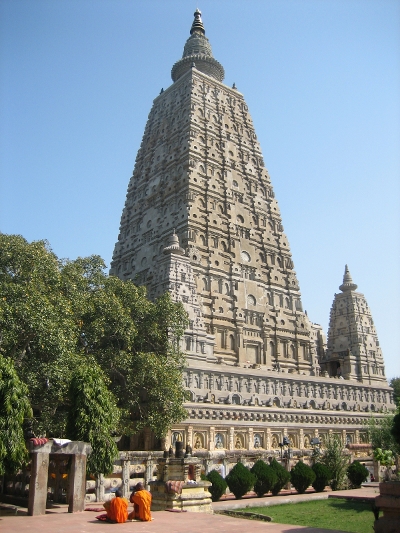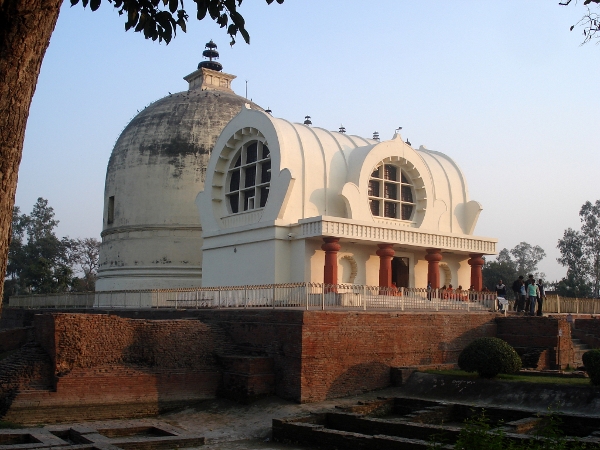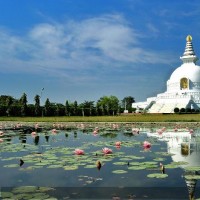Blog
The illuminated pilgrimage: four holy places for Buddhism
One of the humanity oldest religions, a mystical phenomenon that escapes of theism, an oriental compendium of wisdom that returns from time to time to seduce more westerners. The philosophy of the Four Noble Truths is not an organized religion like the others but does have some points in common; one of them is the phenomenon of pilgrimages. Today we speak of enlightened pilgrimage: four holy places for Buddhism.
The holy places where the followers of the doctrine explained by the noble Siddartha Gautama come up are located in India. Although Buddhism isn't the predominant religion on the peninsula of Hindustan, places where Gautama was born, attained enlightenment and preached what he had learned when he reached the Enlightment are in his home region: the northwest of the present Republic of India and Nepal.
Although most of inhabitants in these four sites are Hindu ethnicity, Buddhism is no majority or these holy places. Still, thousands of Buddhists from different philosophical branches will spend time every year to attend these holy places where Buddhism was originated.
Lumbini: 2500 years ago the noble Siddartha Gautama came into the world in a palace of this Nepalese town, or so tradition told us it. The birth of charismatic individuals associated with cults or philosophies is always magnified, and Buddha is no exception. Tradition told that Siddartha's father, who belonged to the warrior caste the second largest, consulted astrologers about the future of his newborn. The omen predicted that the child would achieve a great spiritual influence. His father was frightened os Siddartha leave him and his position, retreated to his palace where Gautama was always surrounded by health, youth and beauty. When he was 29, Gautama slipped the palace and had known Four Meetings: by the first time, he saw an old man, a sick man, a corpse and an ascetic. These views will change so much that he decided to leave behind his life in the palace and follow a group of ascetics called sramanas. This decision is known as the Great Renunciation. Over the years and the expansion of Buddhism Lumbini became the first stage of Buddhist pilgrimage.

Bodh Gaya: during his time with the sramanas, Gautama learned to meditate and deprived of material desires to remove them. Drank just raindrops that slipped to his lips and occasionally fed with a few grains of rice. This deprivation threw him into a terrible weakness that nearly killed him. This experience made Gautama layeth on the appropriateness of material deprivation so extreme. At the end of the day, he understood that a middle way between the mortification of the body and sensory plenary indulgence helped him in his meditation, increased his powers and extended his lucidity. He decided to follow the Middle Path, then, Gautama came to the town of Bodh Gaya, ate a little and sat under a Bodhi fig tree, a sacred tree, in order not to get up until he had solved the problem of human suffering. In the end, Gautama attained Nirvana and left behind samsara, the wheel of suffering and reincarnation in which we live. From here you will be started to be known as Buddha. The town of Bodh Gaya, near Varanasi, became a point of pilgrimage for Buddhists.

Sarnath: after attaining enlightenment, Buddha pondered whether to tell how he had succeeded or not. In the end, he decided to explain to others how it was possible to break the endless cycle of birth and suffering. It was in the town of Sarnath where Lord Buddha decided to explain his teachings who would listen. Today this town in northeastern India retains an impressive stupa (burial mound where buried in a seated position to sramanas was given.
Kushinagar: at the age of 80, the Buddha announced that he would soon leave his earthly existence. Shortly after this omen. He suffered food poisoning and died in a forest of Kushinagar (Uttar Pradesh, India), surrounded by disciples.

Because Buddhist principles themselves, little rigid about the importance of the clerical hierarchy, these places of pilgrimage tourism show a mix between "ordinary" interest in the exotic and genuine religious pilgrimage but above all, we demonstrate the universal nature the phenomenon of pilgrimages.
